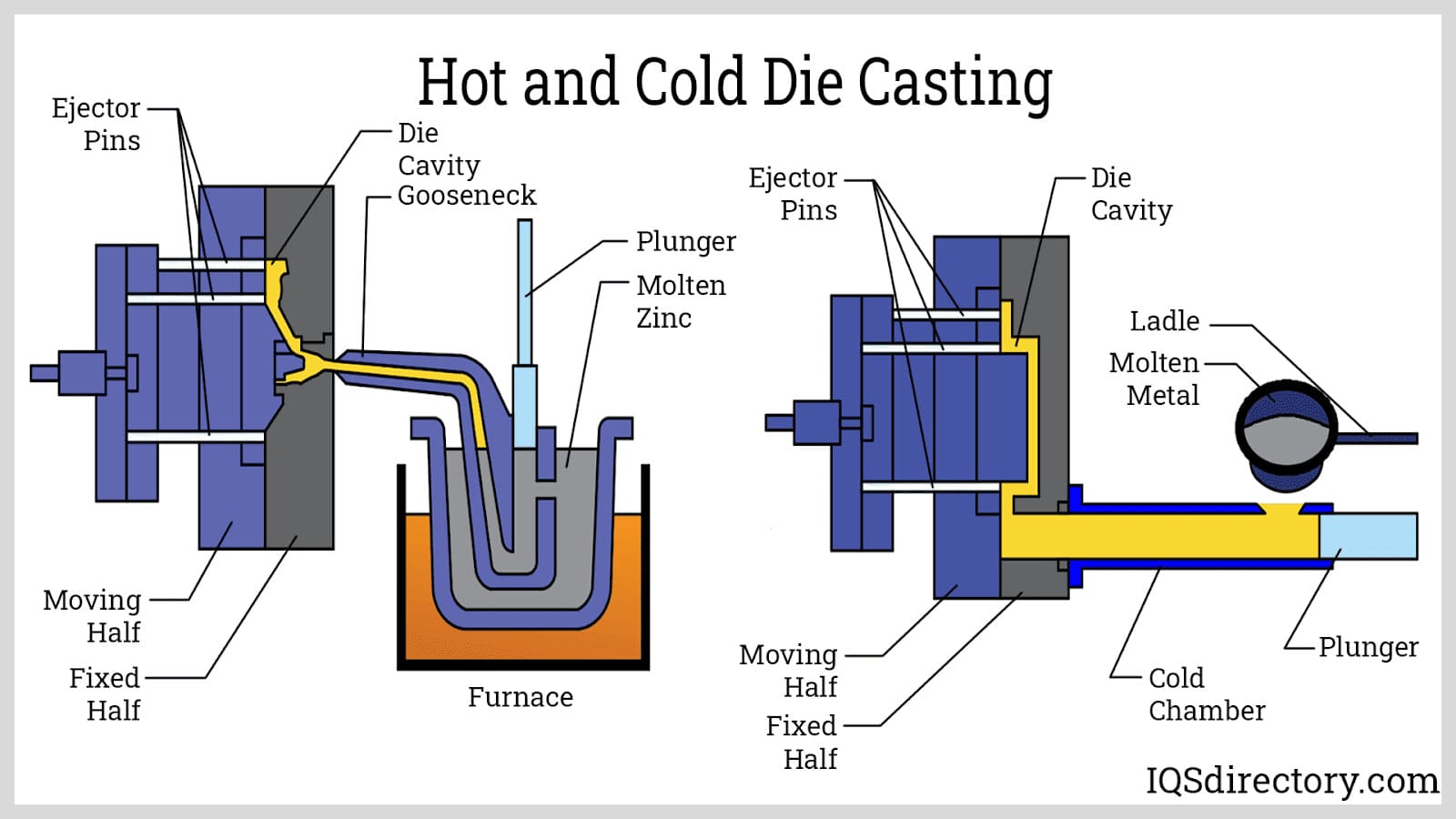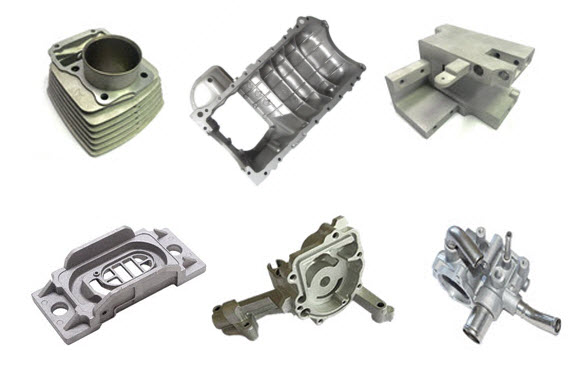The Value of Aluminum Foundry ahead of time Industrial Production Techniques
The Aluminum Foundry plays an essential function in the development of commercial manufacturing methods. Its lightweight buildings and versatility make Aluminum a suitable choice for different applications. Advanced casting approaches, including die casting and 3D printing, allow for elaborate designs and automation. As the market changes towards automation and sustainability, inquiries develop about the future trajectory of Aluminum foundries and their effect on making effectiveness. What challenges and innovations exist in advance?
The Duty of Aluminum in Modern Manufacturing
Aluminum plays a crucial function in modern production because of its one-of-a-kind properties and flexibility. As a light-weight metal, it notably minimizes the overall weight of products, improving fuel performance in transport and aerospace sectors. Its outstanding deterioration resistance assurances longevity and integrity, making it optimal for different applications, from auto elements to constructing materials. Light weight aluminum's malleability permits it to be easily shaped right into intricate styles, promoting ingenious item development. Its conductivity makes it ideal for electrical applications, contributing to improvements in electronic devices and renewable power technologies. The adaptability of Aluminum also encompasses its recyclability, which contributes to lasting manufacturing practices. As industries remain to prioritize efficiency and environmental duty, Aluminum stays a crucial product, promoting innovation and boosting production procedures across several sectors. Its duty is not simply useful; it is foundational to the development of contemporary commercial practices.
Key Advantages of Aluminum Spreading
The advantages of Aluminum casting are considerable, adding to its popularity in numerous commercial applications. One crucial advantage is the lightweight nature of aluminum, which lowers transportation costs and enhances fuel efficiency in vehicle and aerospace fields. In addition, light weight aluminum's excellent corrosion resistance prolongs the life expectancy of actors elements, making them excellent for aquatic and outdoor settings.
Furthermore, Aluminum spreading enables for complex styles and complex geometries, offering suppliers with greater versatility in item development - Wisconsin Aluminum Foundry. The material also shows good thermal and electrical conductivity, making it appropriate for a series of electronic applications
An additional benefit is the rapid solidification process, which results in finer microstructures and improved mechanical properties. Aluminum can be reused consistently without shedding its inherent qualities, advertising sustainability in making techniques. These advantages highlight Aluminum casting's crucial duty ahead of time commercial manufacturing techniques while fulfilling diverse engineering demands.
Ingenious Casting Techniques and Technologies
Many innovative spreading strategies and innovations have arised to improve the efficiency and high quality of Aluminum manufacturing. Amongst these, die spreading attracts attention as a method that permits for high-volume manufacturing of intricate shapes with superb dimensional precision. This technique makes use of high stress to inject molten Aluminum into a mold, causing smooth surfaces and decreased demand for machining.
Another noteworthy innovation is making use of 3D printing for mold and mildews, which allows fast prototyping and decreases preparations substantially. This technology enables for complex layouts that standard methods might struggle to attain.
In addition, financial investment casting remains to develop, utilizing advanced materials and processes to create precision elements. The adoption of computer simulations in the spreading process has better improved end results by anticipating prospective flaws and enhancing mold layouts. Together, these technologies are transforming Aluminum shops, paving the means for more efficient production and premium item quality in various industries.
Ecological Influence and Sustainability in Aluminum Foundries
As markets progressively focus on sustainability, the ecological influence of Aluminum foundries has come under analysis. These centers are considerable factors to greenhouse gas exhausts and energy usage, primarily because of the energy-intensive processes entailed in melting and casting aluminum. The removal of bauxite, the key ore, additional exacerbates ecological issues, leading to environment damage and air pollution.
In response to these obstacles, numerous Aluminum factories are adopting much more sustainable techniques (Metal Castings). Developments such as reusing scrap Aluminum greatly minimize power use and emissions, as recycling calls for only a fraction of the power required for primary production. Additionally, the integration of renewable resource sources, such as solar and wind power, is acquiring grip in foundries intending to lower their carbon impact
Developments in technologies that reduce waste and improve resource effectiveness are coming to be vital for the future of the Aluminum industry. These initiatives highlight the shift towards a more lasting and ecologically responsible approach in Aluminum foundries.
Applications of Aluminum Spreading Across Industries
Aluminum casting discovers widespread application across diverse industries, owing to its beneficial properties such as lightweight, corrosion resistance, and exceptional machinability. In the auto market, suppliers utilize Aluminum castings for engine elements, transmission real estates, and architectural parts, enhancing gas effectiveness and efficiency. The aerospace market gain from aluminum's strength-to-weight proportion, using it in airplane frames and parts, which add to decreased total weight and boosted gas economic climate.
The customer electronics market uses Aluminum castings for real estates and framework, combining aesthetic appeal with durability. In building and construction, Aluminum spreadings are utilized for window frameworks, doors, and architectural elements, giving both performance and layout flexibility. Additionally, the aquatic industry utilizes Aluminum casting for watercraft hulls and installations, guaranteeing resistance to deep sea deterioration. This flexibility throughout various fields highlights Aluminum casting's critical function in modern industrial applications, driving development and effectiveness.
Challenges Faced by Aluminum Foundries
Aluminum foundries encounter substantial difficulties in conference rigid environmental guidelines while keeping operational effectiveness. In addition, a scarcity of knowledgeable labor exacerbates these problems, preventing efficiency and development. Addressing these issues is important for the sustainability and growth of the Aluminum casting market.
Ecological Laws Compliance
Although Aluminum shops play an essential function in commercial production, they usually deal with considerable obstacles in complying with environmental guidelines. These guidelines are made to minimize air and water air pollution, waste generation, and energy usage. Shops usually should purchase sophisticated modern technologies to satisfy stringent emission standards and take care of harmful materials successfully. The expenses related to these upgrades can strain funds, particularly for smaller sized procedures. Furthermore, the intricacy of traversing governing frameworks can cause conformity mistakes, resulting in expensive penalties. Constant adjustments in policies need foundries to adjust quickly, often demanding continuous training and updates in operational techniques. Balancing regulative compliance with production efficiency stays a vital problem for the Aluminum Foundry market.
Competent Labor Shortage
As the Aluminum Foundry industry remains to develop, a pushing difficulty has actually emerged: a proficient labor shortage that endangers the market's productivity and development. This shortage is mainly fueled by an aging labor force and the lack of interest amongst younger generations in seeking jobs in manufacturing. Numerous experienced work need specific training and experience, which are significantly tough to locate. Consequently, Aluminum factories have a hard time to maintain functional performance, leading to hold-ups and increased manufacturing expenses. Initiatives to attract brand-new ability via instruction programs and partnerships with universities are underway, yet these initiatives take time to produce results. Without a durable increase of experienced workers, the Aluminum Foundry industry might face substantial obstacles in satisfying the demands of contemporary industrial manufacturing.
Future Trends in Aluminum Foundry Manufacturing Techniques
The future of Aluminum Foundry production methods is positioned to be substantially formed by improvements in automation and sustainable product developments. Automation is expected to improve effectiveness and precision in Foundry procedures, lowering labor prices and reducing human mistake (Metal Castings). An expanding focus on sustainability will certainly drive the advancement of eco-friendly products and practices, aligning the sector with international ecological goals.
Automation in Foundry Processes

Sustainable Product Innovations
While the Aluminum Foundry industry embraces automation, an identical focus over at this website on lasting product technologies is reshaping manufacturing techniques for the future. Advancements in reusing procedures are allowing shops to make use of post-consumer light weight aluminum, noticeably decreasing energy intake and waste. Moreover, the development of eco-friendly additives and coatings is minimizing the environmental effect connected with traditional materials. Technologies in light-weight Aluminum alloys are enhancing efficiency while promoting sustainability, making products not just extra efficient however additionally less complicated to reuse at the end of their life cycle. As the market adapts to more stringent environmental regulations, these sustainable methods are coming to be vital. Ultimately, the commitment to sustainable product technologies in Aluminum factories will certainly drive enhanced performance while addressing global ecological difficulties.
Regularly Asked Concerns
Exactly How Does Aluminum Contrast to Various Other Steels in Casting?
Aluminum supplies benefits over various other steels in casting, consisting of reduced melting points, outstanding fluidity, and resistance to corrosion. These residential or commercial properties enable detailed styles and faster production, making Aluminum a favored option for many markets.
What Precaution Are in Location in Aluminum Foundries?
Safety actions in Aluminum shops consist of protective gear for employees, appropriate ventilation systems, regular devices maintenance, fire prevention protocols, and strict adherence to security policies, making sure a secure environment while reducing the threat of mishaps and injuries.
Just How Are Aluminum Alloys Selected for Certain Applications?
Aluminum alloys are selected based upon mechanical properties, deterioration resistance, and thermal conductivity. Designers review application requirements, considering factors like weight, stamina, and environmental conditions, guaranteeing excellent performance for particular commercial or business uses.
What Is the Average Life-span of Aluminum Cast Products?
The ordinary life expectancy of Aluminum actors products commonly ranges from 20 to 50 years, depending on ecological variables, usage problems, and upkeep practices. Proper treatment can substantially prolong their useful durability and performance efficiency.

Are There Qualifications for Aluminum Foundry Processes?
Yes, there are accreditations for Aluminum Foundry procedures, consisting of ISO 9001 for high quality management systems and details market criteria like ASTM and SAE, which assure adherence to high quality and security in Aluminum manufacturing and casting.
Aluminum foundries play a necessary duty in commercial manufacturing, they commonly encounter significant challenges in conforming with environmental laws. Aluminum factories battle to maintain functional effectiveness, leading to delays and enhanced production expenses. The future of Aluminum Foundry manufacturing techniques is poised to be significantly formed by advancements in automation and lasting material advancements. Increasingly, automation is shaping the landscape of Aluminum Foundry manufacturing methods, driving performance and accuracy. While the this page Aluminum Foundry market welcomes automation, a parallel focus on sustainable material technologies is improving production strategies for the future.